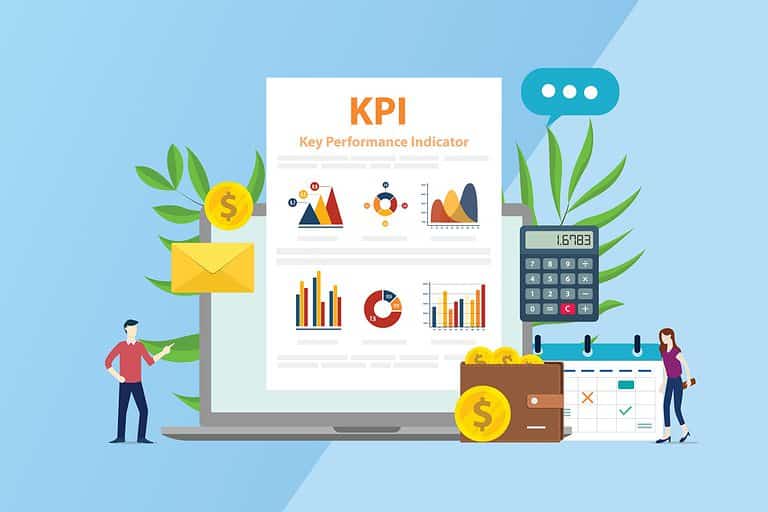Maximizing Growth: The Complete Role of a Customer Success Manager in Driving Business Success
What does a customer success manager do, and how do they contribute to a company’s growth? Fundamentally, this role involves strategic engagement with customers to enhance their experience and ensure they achieve their desired outcomes with your product or service. Effective customer success management leads to higher retention rates, substantial business growth, and a robust bottom line. This article offers a deep dive into the role, highlighting the key responsibilities, the required skill set, and the value customer success managers bring to both customers and companies alike.
Key Takeaways
Customer Success Managers (CSMs) play a proactive role in driving customer loyalty and satisfaction by understanding customer behavior, anticipating needs, fostering relationships, and facilitating proactive solutions based on customer data analysis.
Customer loyalty is nurtured through personalized experiences, trust-building, exceptional service, and loyalty programs, with key metrics like retention rate, NPS, and CSAT used to measure loyalty and guide strategy.
Effective customer success strategies involve tailoring approaches to distinct customer segments and integrating initiatives across departments for a cohesive approach to customer satisfaction, retention, and business growth.
Decoding the Role of a Customer Success Manager

Customer success managers are invaluable to the success of any business due to their role as a liaison between customer and company. They not only ensure that needs are met, but also go above and beyond traditional account management or support by proactively creating beneficial experiences for customers in order to cultivate loyalty. These heroes have an intimate knowledge about the products/services being sold plus the behavior preferences of customers allowing them insight into how best help buyers achieve their goals through what’s offered from businesses today.
It takes dedication, product comprehension, problem solving aptitude along with familiarity regarding consumer choices to be able to make it big in this field. Particularly when armed with data on each individual clientele needing assistance. With these skills firmly rooted in every successful customer service manager, teams can create memorable ventures leading to more revenues generated quickly.
The Mission of Customer Success Managers
The focus of customer success managers is crystal clear: they aid customers in attaining their objectives while gaining utmost value from the product or service, leading to quick ROI and right use. This also shifts company operations from reactive to proactive. A success manager stands as an intermediary between clients and other departments at the organization so that all relevant experts are within reach when it comes to fulfilling any client requirement which may have a more complex technical component needing assistance from professional services personnel etc.
Key Functions of a Success Manager
The responsibility of a customer success manager is to build strong relationships with their clients, leading to greater loyalty. With this in mind, they are tasked with reducing churn by actively engaging and providing custom solutions. Customer needs are identified throughout the lifecycle for upselling purposes, which provides added value for customers. Finally, feedback from customers allows them to refine strategies towards better serving these same patrons.
The Evolution of the Customer Success Manager Role
Customer success managers have increasingly become a critical element for many companies, particularly in today’s subscription-based models. They are not only responsible for making sure customers are happy with their product but also help to gain an understanding of the customer experience from how they use it, this helps them be successful while utilizing the product.
For most organizations, these professionals play such a huge role that has made them essential in order to achieve any form of business success. As their focus is on being more proactive and tailored towards serving each individual customer.
Building and Nurturing Customer Loyalty Through Success Management

Customer success managers are the backbone of customer loyalty. They ensure a positive experience and promote satisfaction while engaging in proactive outreach to demonstrate customers’ value. Acknowledging and rewarding loyal clients, forming trust through sincere communication, offering excellent service tailored for individual needs – these strategies can turn casual shoppers into devoted brand advocates. Big data has become an invaluable tool by which CSMs understand consumer behavior. They use this information to craft engagement plans that fortify relationships between businesses and their clientele. Taking all these steps drives up customer fulfillment levels – and consequently establishes loyalty among the customers served!
Strategies for Enhancing Customer Loyalty
Fostering customer loyalty is integral for delivering value to customers. When a company makes its patrons feel appreciated, they are more likely to remain loyal and the success of the business. Faithful buyers tend not to be as vulnerable when it comes to price changes or product availability. Rather prioritizing companies with exceptional services and experiences.
To create memorable customer adventures that strengthen their bond towards one’s brand, firms can utilize approaches like emphasizing client satisfaction, individualizing relationships between consumers-businesses, and constructing an obvious vision regarding how clients should be served on every level in order to fulfill expectations but exceed them at times too- while also introducing rewards systems for being part of said organization’s culture.
Measuring Loyalty: Metrics That Matter
For customer success managers, gauging and building loyalty are equally important. Key metrics they track include retention rate, Customer Satisfaction Score (CSAT), as well as Net Promoter Score (NPS).
The CSAT metric is used to measure the satisfaction level of customers after engaging with a certain product or service offered by the company. It’s most successful when applied directly after users utilize a feature in their overall experience journey.
On contrary to that, NPS indicates how likely it is for customers to recommend what you offer them – be it services/products – while evaluating CSAT helps assess customer gratification towards your offerings at hand.
Crafting a Winning Customer Success Strategy

Developing an effective customer success strategy is essential for the role of customer success managers. Such a plan necessitates adjusting approaches to diverse types of customers and integrating successes across organizations. By knowing distinct requirements from all kinds of customers, these personnel can personalize their strategies that could be advantageous in rising marketing efficiency, deepening consumer loyalty, as well as promoting productivity.
Also, by unifying successful efforts throughout departments within a business, there will be holistic satisfaction and growth with regards to its clients. This includes setting up systems which Collaboration between units plus support joint performance towards client gratification advances.
By creating individualized plans combined with consolidated successes connected company wide initiatives, these professionals guarantee each customer’s needs are achieved while progressing corporate development simultaneously.
Tailoring Strategies to Different Customer Segments
Customers can be separated into segments for customizing strategies in customer success management, enabling businesses to better serve their needs. This improves marketing effectiveness and increases customer loyalty, leading to more profitability. Segments may include economic value, requirements, shared characteristics such as Fortune 200 or 1000 companies, and other strategic factors.
Creating personalized solutions that meet individual needs combined with content suited to each segment encourages customers to stay loyal brands advocates. Helping the business progress even Forward.
Integrating Customer Success Across the Company
Organizations need to put in place procedures that foster collaboration between departments and help facilitate cross-departmental requests related to customer success initiatives. This type of integration helps create a more unified approach towards fulfilling the expectations of customers while also establishing an organizational culture rooted in putting clients first.
By promoting open communication between teams, they can make sure all members are focused on achieving one common goal: ensuring complete satisfaction for their customers.
Advanced Techniques in Customer Data Analysis

Customer success teams and managers must have an understanding of data analysis techniques if they are to be successful. These advanced strategies encompass regression, cluster, time series and cohort analyses as well as Monte Carlo simulation, descriptive modeling plus predictive analytics for Insights into customer needs. Strategic decisions should focus on recruitment that values the impact of data-driven operations with metrics at the forefront. All while centralizing information around customers. This culture is key in developing positive results via personalized experiences which anticipate challenges before solutions can ensue accordingly.
Leveraging Customer Data for Proactive Solutions
Customer data is a treasure trove of insight that can be utilized to produce proactive measures. Customer success managers are able to use predictive analysis in order to make predictions based on trends and patterns, identify areas for improvement through examining product usage, suggest pertinent upsells by taking into account the customer’s history with interactions, and detect which customers may potentially experience difficulty so they get timely intervention.
There exist various platforms and tools designed specifically for extracting value from this data while making it easier for these professionals. Allowing them effortless access when providing those same aforementioned services to their customers.
Data-Driven Decision Making in Customer Success
Customer success managers, who are responsible for ensuring customers succeed with the help of a customer success program, can make data-driven decisions based on various sources in order to gain better insights into their customers and personalize interactions. By leveraging collected customer data such as usage analytics, feedback surveys and health/satisfaction scores among others. They can generate leads that will contribute significantly towards increasing the lifetime value of these prospects. Customer acquisition efforts too will be optimized by examining competitor’s performance metrics while monitoring one’s own KPIs through an effective process designed around measuring customer satisfaction levels in tandem with driving high retention rates over time.
The Synergy Between Customer Success and Product Teams

The relationship between customer success and product teams has become crucial in order to create a truly customer-centric environment. By working together, they guarantee that the products are built with customers’ needs at their core, resulting in better outcomes for both development and experience alike.
Our dedicated Customer Success Team along with our support team play an integral part in advancing any improvements concerning the product. This is due to their feedback loop which helps identify possible problems as well as what could be done by means of upgrades or modifications so as to improve consumer satisfaction levels. These teams provide invaluable insight into what exactly customers desire from either existing services or new designs, thus furnishing engineers with information about requirements and preferences prior to creating something new that corresponds perfectly with user expectations.
Informing Product Development with Customer Insights
Customer success teams are instrumental in furthering customer satisfaction and shaping product enhancement. They ensure the collection of client opinions, which offer key views on consumer wants/requirements, inclinations as well as performance of goods or services. This information supports product supervisors in setting priorities for development possibilities based on how customers value them. Thus helping to find any scope of improvement too.
By effectively relaying this feedback from consumers to those overseeing production-related activities, organisations can upgrade their products – leading not only to greater loyalty among clients but also improved internal operations plus a higher chance of making add-on sales efficiently.
Bridging the Gap: CS Teams and Engineering Collaboration
To provide a customer-centric experience, organizations should bridge the gap between their customer success and engineering teams. Transparency, trust building exercises among departments and clear communication expectations are key components to foster an environment where collaboration can flourish. Agile methods along with tools for feedback testing make it possible to iterate on insights from customers that inform product enhancements in meaningful ways. All these steps ensure effective utilization of insights gathered by customer success teams for developing user friendly products which ultimately benefits all involved stakeholders, namely customers themselves first and foremost!
Empowering Customers Through Effective Onboarding
At the start of a customer’s journey is onboarding, an essential process. A successful onboarding phase lays the groundwork for long-term client success and relationships. During this period, customers choose whether to realize value from their product or discontinue its use altogether.
The significance of boarding cannot be overstated as it prepares users with what they need to know in order to get the most out of your service/product. Good design will not just show them how it works, but also enlighten them about all that they can accomplish through using it.
Finally, proper implementation also impacts significantly on customer retention rates. With correctly implemented strategies, organizations have seen upsurges by fifty percent or more than before due largely because clients perceive actual worth earlier in their usage cycle.
Best Practices for a Smooth Customer Onboarding Experience
Customer success managers need to ensure a great onboarding experience in order for customers to have a successful journey. This involves personalised guidance, good communication and continuous support so that the customer feels appreciated and their needs are met, which will lead them towards loyalty. To achieve this, it is vital for customer success teams to be aware of each individual’s goals when designing an appropriate plan accordingly. Ensuring satisfaction throughout the whole process forms part of Customer Success management strategy needed to retain clients long-term.
Customizing Onboarding to Fit Customer Profiles
Customers are unique, and so should be their welcome to your organization. By customizing the onboarding process based on customer profiles, it guarantees a more individualized and successful experience that will bond customers with you. Making use of customer data helps craft an engaging introduction tailored for each one’s interests, thus boosting loyalty while helping business expand as well.
Accessible resources can make managing this engagement simpler by streamlining personalization during the boarding period resulting in clients having a smooth journey connecting them with your brand or service even after boarding. Than before!
The Art of Customer Retention and Expansion
Customer success managers have a key role to play in customer retention and expansion. To accomplish this, they must be constantly engaging with customers to build relationships, recognizing their needs and preferences as well as delivering value regularly. Proactive management of customer relations plays an essential part in ensuring satisfaction levels are maintained for the purpose of retaining customers – which is both cost-efficient and conducive to business growth alike. Challenges arise during these processes. It can easily be addressed by staying informed on what existing clients need from your services or products at all times while being prepared to resolve any issues that may occur along the way.
Identifying Upsell Opportunities with Existing Customers
Customer success managers have a great opportunity to boost sales and maximize customer satisfaction by recognizing their needs and proposing relevant products. It is critical for these professionals to understand the consumer so they can easily detect opportunities where an upsell may occur, thereby creating enhanced value for the buyer. As such, knowing customers intimately will be key in giving them what they need while also profiting from it as well.
Reducing Churn by Addressing Pain Points Early
Customer loyalty is an important part of customer success management, which seeks to minimize churn. Customer Success Managers achieve this by being attentive and responsive to customers’ needs throughout their journey, from taking on feedback promptly through providing tailored discounts or exclusive experiences. This encourages a positive experience that builds trust with the customer over time, leading them not only to remain but also become more loyal in doing so.
The Financial Impact of Customer Success Teams
Customer success and its associated teams are essential in achieving financial gains for a business. Companies can keep an eye on metrics, such as churn rate, customer retention figures, MRR (monthly recurring revenue), ARPU (Average Revenue per User), plus the NPS score (Net Promoter Score) to measure how successful their initiatives have been when it comes to making customers satisfied with what they offer. Knowing this info means businesses understand where any possible investments should go that best serve them and Increase satisfaction of consumers, leading consequently to sustainable growth of enterprise finances.
Understanding the ROI of Customer Success Initiatives
It is essential to know the ROI of customer success initiatives in order to be able to accurately justify and measure investments. By keeping tabs on outcome-based metrics over time, as well as noting costs associated with programs, organizations are able to establish a return rate for their customer successes.
Measuring this can occur via increased income or savings due plus better client satisfaction ratings, compared to what was spent on these projects. All that being taken into account will showcase how successful endeavours have been related specifically to customers’ wants and needs.
Balancing Cost and Value in Customer Success Operations
It is essential for customer success teams to take into consideration both cost and value when managing operations. In this way, the company’s resources can be allocated wisely in order to have the greatest impact on customers. By prioritizing creating tangible results while maintaining sensible expenditures, long-term business development will be achievable.
Tools like HubSpot and Zendesk are available that aid in keeping costs down in customer success activities.
Cultivating a Customer-Centric Culture
In this day and age, where customers are the main focus of businesses, cultivating a customer-centric environment has become essential for success. Such an atmosphere guarantees fulfillment of client needs as well as its own prosperity.
To achieve a customer focused setting, organizations must: operationalize empathy towards clients. Hire personnel that prioritize consumers’ satisfaction, make insights on consumer behavior available to all levels within their company structure, ensure direct contact with those they serve is convenient and easy to access; reinforce trustworthiness in order to build loyalty among buyers plus create advocacy around them amongst users taking into account innovation, integrity, intimacy, control and purpose.
Forming such culture can come across some issues like lack of leadership support or fractured divisions which makes it difficult but these problems can be tackled if there is senior commitment paired with alignment between departments connected by breaking down barriers between groups Leading employees through changes while removing obstacles keeping an eye on only one target, total contentment from customers.
Embedding Customer Success Principles in Organizational DNA
Prioritizing customer success is essential to building a culture of excellence in regards to customer satisfaction. Aligning Customer Success Managers with customers’ needs. KPIs, hiring employees who are passionate about delivering excellent experiences, incorporating the concept into onboarding for new staff and fostering collaboration among cross-functional teams all contribute to achieving this goal. In essence, embedding principles of customer success deeply within an organization’s approach helps ensure long lasting successes with its clients and stakeholders alike.
Training and Development for Customer Success Excellence
Organizations have the opportunity to cultivate customer success excellence through their employees by emphasizing core areas such as patience, empathy and active listening in order to understand what customers need. This can be done effectively with a tailored learning and development strategy that involves setting goals, using KPIs, and gathering customer data for analysis so that it informs decisions taken within training programs. Regular educational opportunities must also be provided and an ongoing culture of improvement established – all these elements coming together will allow organizations to excel at meeting their customers’ needs successfully.
The Future Landscape of Customer Success Management
As we look towards the future, customer success management will remain a key factor in business growth and expansion. Innovations in technology have opened up possibilities for more tailored customer journeys and increased automation of communication. Scaling strategies such as automating repetitive tasks or providing extensive training to support teams can ensure successful execution when serving larger client bases.
Above all else, it is essential to keep focus on customers at every stage. This means staying abreast of technological advances while putting feedback from consumers first, which allows services and products to be improved continually with their needs taken into account always. Such efforts guarantee that those employing these tactics are well-equipped to provide quality service throughout expanding operations – thus ensuring sustained success over time!
Innovations in Customer Success Technology
Customer success technologies are enabling customers and managers to form stronger relationships, as well as ensuring that customer experiences are maximized. Through predictive analysis, it is possible for customer success managers to build trends-based outcomes in order to anticipate potential issues before they arise – thus offering timely solutions derived from the analysis of the collected data about customers. There are multiple platforms and tools available which allow for this process simplification when dealing with such important information regarding a company’s clients.
Scaling Customer Success for Business Growth
For organizations looking to scale their customer success operations, a customer success solution is key. Various platforms and tools can streamline the process while ensuring customers have an efficient, personalized experience throughout their journey. To enhance service delivery and address any potential pain points, incorporating feedback from customers will be integral in driving growth for businesses of all sizes. Providing comprehensive training resources for support staff can ensure they are equipped with the necessary knowledge and skills needed to successfully assist customers effectively by using automation when required, allowing teams more time to devote to complex queries.
Summary
Customer success managers have an essential role to play in business growth, with their focus being on attaining customer satisfaction and building loyalty. This is done by developing winning customer strategies which involve leveraging advanced data analysis techniques as well as fostering a synergy between the customer success and product teams through empowering customers during onboarding stages. All of these actions lead not only to retention but also scaling initiatives for Progress towards long-term goals. Ultimately contributing significantly towards achieving greater heights in terms of business development overall.
Frequently Asked Questions
What a customer success manager does?
A customer success manager’s responsibility is to increase loyalty among customers, drive upsell opportunities and renewals as well as minimize churn. This role links sales and support in order to maximize product value for the clients while also monitoring every step of their service experience.
How much do customer success managers earn?
Customer success managers in the US can have salaries anywhere from $39K to $250K, with an average of roughly around $88.7k yearly. The median salary for a customer success manager is about 80k per year. Customer success and success of their customers are top priorities for these roles, which allows them to command high wages proportionate to this important responsibility they bear.
What is the role of the CSM?
As Customer Success Managers (CSMs), our aim is to provide the best customer satisfaction and experience possible. We maintain good relationships with customers, help solve their issues, and encourage them to use our product effectively so that they become active users of it in the long run. Our job requires us to ensure a smooth transition from prospecting for new customers through to having those same clients continuously using our services.
How does onboarding contribute to customer success?
The importance of onboarding for customer success is undeniable, as it provides customers with the knowledge they need to make the most out of their product. Thus contributing significantly to their overall achievement when using that same product. Making sure customers have all necessary information guarantees them a successful experience from start to finish.
How can customer success initiatives be scaled for business growth?
To boost customer success and thus increase business growth, employ automation for common tasks. Provide the support staff with comprehensive training too. It is important to keep taking cues from customers’ feedbacks in order to continually refine service delivery. This will help expand efforts put into providing a satisfactory experience to clients/customers while driving expansion of the company’s operations at the same time.







